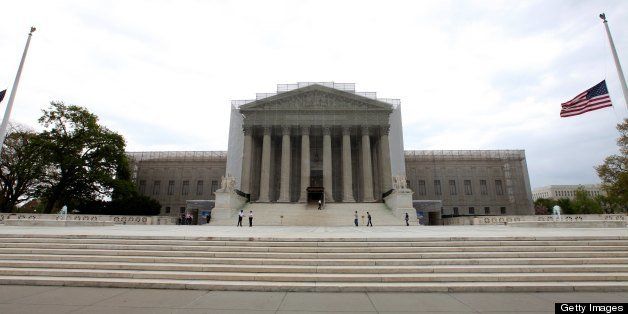
The Supreme Court has long enjoyed a reputation for fairness and impartiality. Although trust in the Court has waned somewhat in recent years, recent revelations threaten that reputation, and recent research shows how politics may be seeping into the decisions of the Supreme Court as well as those of the lower federal courts following high court guidance.
In the late fall of 2000, the Supreme Court entered with full force into the political arena when it ruled for George W. Bush in the landmark Bush v. Gore decision. At the time, Justice Stevens, in dissent, wrote the following: "[a]lthough we may never know with complete certainty the identity of the winner of this year's presidential election, the identity of the loser is perfectly clear. It is the nation's confidence in the judge as an impartial guardian of the rule of law." Recently, retired Justice Sandra Day O'Connor, who joined the majority in that decision, admitted that Justice Stevens's dissent was essentially correct: The Court should have never entered such a political dispute, and should have left it to the courts of the state of Florida to sort it out.
Politics are just one facet of the Court's leanings. As a recent study shows, the Court's most pro-business judges in the last sixty years are on the court right now: Chief Justice Roberts and Justice Samuel Alito.
While these two data points certainly suggest the Court has taken a course that is more favorable to the political preferences of the Court's right wing, a less well-publicized aspect of the Court's activities in recent years is the extent to which a majority of justices have strengthened the hand of pro-business litigants to keep cases out of the courts. Through the recognition of the validity of arbitration clauses that appear in many consumer contracts, to placing limits on the use of class actions, the Supreme Court has deployed procedural mechanisms to limit the ability of plaintiffs to vindicate rights in the federal courts.
Another tool the Court has placed at the disposal of well-heeled litigants is the ability to dismiss cases where a judge finds the allegations the plaintiff makes implausible. In a series of cases, one involving cell phone providers and another involving former Attorney General John Ashcroft, the Court found that judges should use their "judicial experience and common sense" when assessing the claims of plaintiffs to determine whether they are plausible. Of course, plausibility is in the eye of the beholder, especially when the beholder is supposed to use his or her experience and common sense in assessing claims. In the case of Ashcroft v. Iqbal, a total of seven judges -- four justices and three appellate judges -- all found that the plaintiff's claims were plausible. But five justices voted to dismiss the case against Ashcroft, considering the claims of the plaintiff implausible. And in Supreme Court poker, five justices beat four justices and three appellate judges every time.
The Court issued this decision in 2009, and it has already been cited by lower courts tens of thousands of times. Recent research by my co-author, Edward Ohanian, and I, reveals how this decision, and the Court's earlier but related decision in Bell Atlantic Corp. v. Twombly, are playing out in the lower federal courts. We reviewed over 500 decisions of trial courts in the federal system ruling on employment and housing discrimination claims and grouped the cases by time period: i.e. pre-Twombly
While this research tends to show a potential political cast to judicial decision making, the Supreme Court has several important decisions it must make in the coming weeks. Rulings on marriage equality and affirmative action in higher education are expected. In one important pro-business decision issued this term already, the Court ruled that the victims of human rights abuses could not sue the perpetrators of those crimes in U.S. courts. In that case, a foreign dictator or warlord was not the defendant, as is typically the case in such actions, but, rather, multinational corporations operating in Nigeria.
Public perception of the Court as fair and impartial is critical to the Court's legitimacy. Should the high court, and the lower courts following its lead, take seemingly political stances in critical cases, even when deploying otherwise objective, value-neutral procedural rules, like the standard for when a complaint alleges a plausible claim for relief, that legitimacy could be questioned. In a democracy, courts must act -- and be perceived to act -- in ways that do not favor any particular party or class. Whether the Court's recent turns will threaten the public's perception of the Court, and the court system as a whole, remains to be seen. But the jury is out, and the data seems to be coming in: The Court appears in the midst of a significant partisan turn, one that could threaten its long-term legitimacy.
